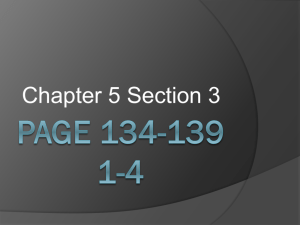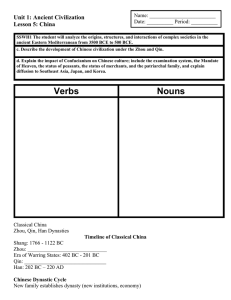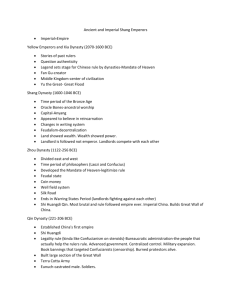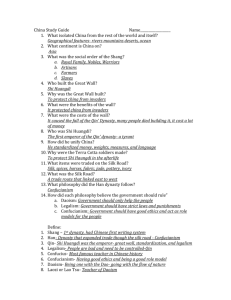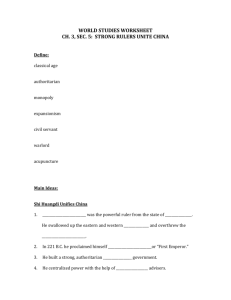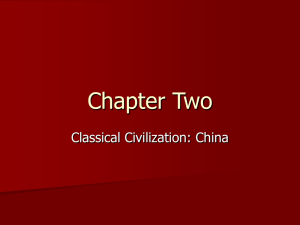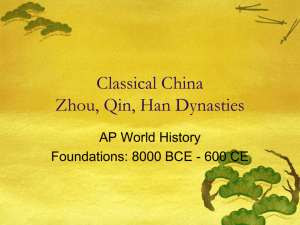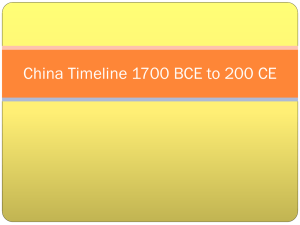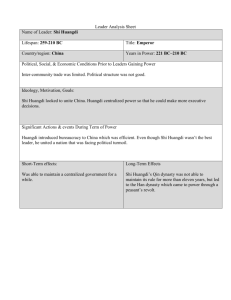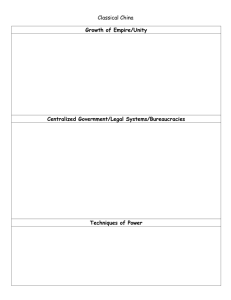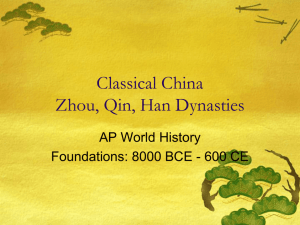File - Ms. Brasch`s World History
advertisement
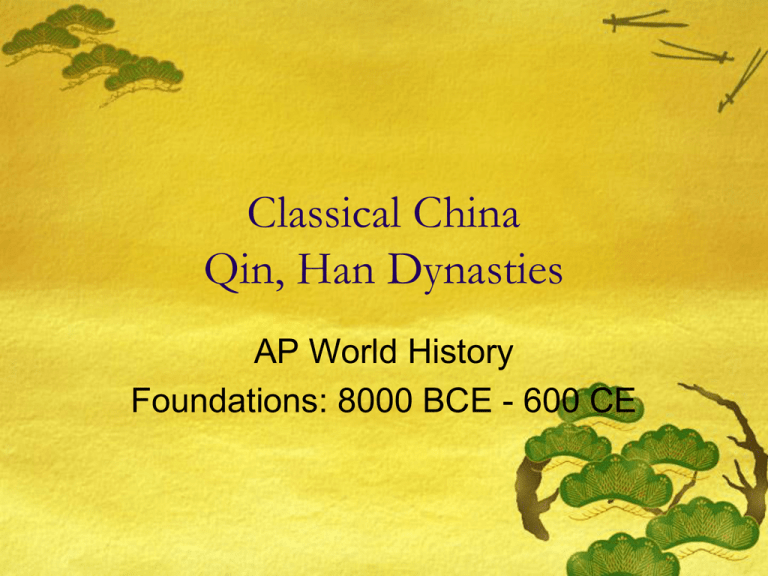
Classical China Qin, Han Dynasties AP World History Foundations: 8000 BCE - 600 CE Quin Dynasty http://youtu.be/1bZXxGv52t8 Qin Dynasty Emerges out of end of Zhou Dynasty/Period of Warring States Founder: Shi Huangdi (“First Emperor”) Goals: Unify and expand China Restore order Social Primogeniture eliminated (practice of having eldest son inherit all property and land) Nobles must leave land and live in Emperor’s court Political Emperor had complete control over all aspects of society Use of brutality and force to accomplish goals Bureaucracy (not of the nobility) expanded to help control all regions National census Single law code Interactions Army expanded to crush rivals and regional rebellions Expanded territory of China, including Hong Kong Influenced parts of Vietnam through conquest Expanded infrastructure to increase interactions Cultural Confucianism looked down upon and followers persecuted Legalism promoted Architectural: Initiates construction of Great Wall; Terracotta Soldiers/Tomb of Shi Huangdi Uniform written language Banned books Economic Introduced standard weights and measures Eliminated the very rare practice of slavery Forced labor necessary for construction projects Extremely high taxes Sponsored agricultural projects (irrigation) and manufacturing of silk Why did the Qin Dynasty Fall? Shi Huangdi Extremely paranoid; killed off suspected enemies (nobles, intellectuals, warlords) Desire to control EVERYTHING High taxes, forced labor Shi Huangdi dies in 210 BCE; followed by 8 years of peasant revolts to determine successor - winner establishes Han Dynasty http://youtu.be/VS7pKZJ3zPs Establishment of Han Dynasty 202 BCE - 220 CE Liu Bang - leads peasant revolts after death of Shi Huangdi 202 BCE - Liu Bang has eliminated almost all of his competition through military might and diplomacy Han Society Some lower classes allowed into bureaucracy Strict emphasis on family relationships Women Patriarchal Some could gain influence through male relatives Three main groups: Landowners & educated bureaucrats Peasants and Artisans “Mean People” - merchants, actors, musicians Han Politics/Government Centralized administration, with less brutality than Qin dynasty Improved bureaucracy Attacked warlords/regional princes Focused less on military buildup Emphasized Confucianism - education for bureaucrats Wu Ti - most famous emperor (140-87 BCE) Brought peace to much of Asia Expanded territory Civil Service Examination Han Interactions Expansion into Korea, Vietnam and Central Asia Expanded contact/trade with India and Persian empires Later with Roman Empire Han Culture Treated Confucianism as religion-shrines constructed Gov’t promoted philosophy Continued construction of Great Wall Innovations - Seismograph, anatomical research, hygiene Animal collars Pulleys and gears Increased production of textiles Water-power mills Paper Han Economy Taxes lower than Qin, but get higher as dynasty progresses Copper coins Required people to work on gov’t projects Gov’t influenced and controlled parts of economy Iron and Salt production Weights and Measures Trade - silk, jewelry, leather goods, agricultural goods Public works programs - canal systems Store surplus of rice and grain The Dynasty Song https://www.youtube.com/watch?v=G7X tD5u3AkQ
